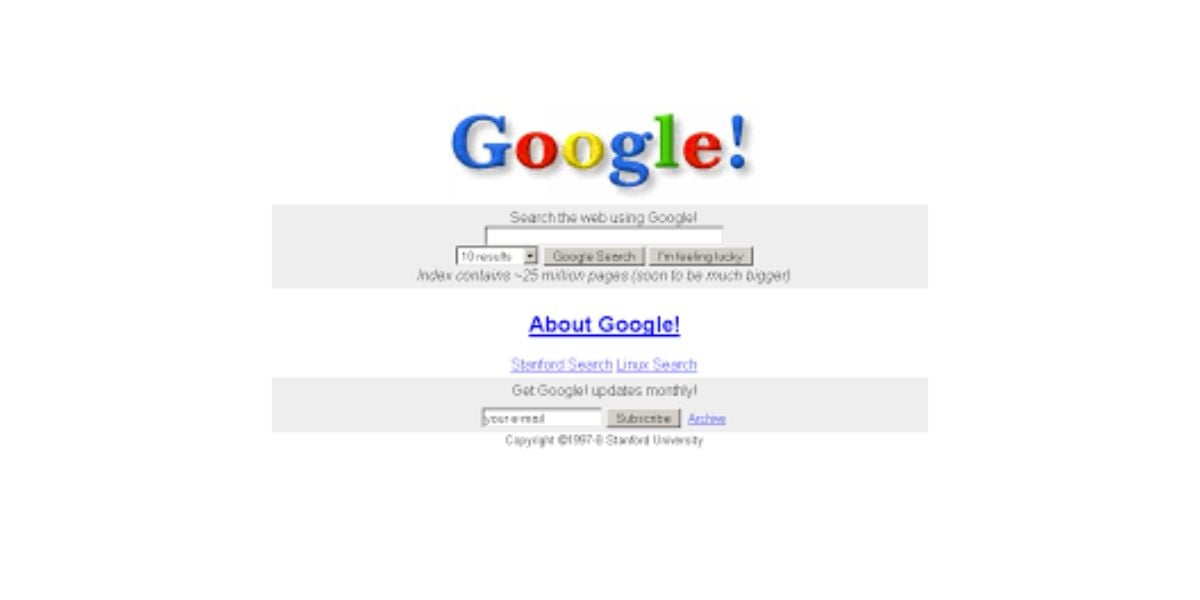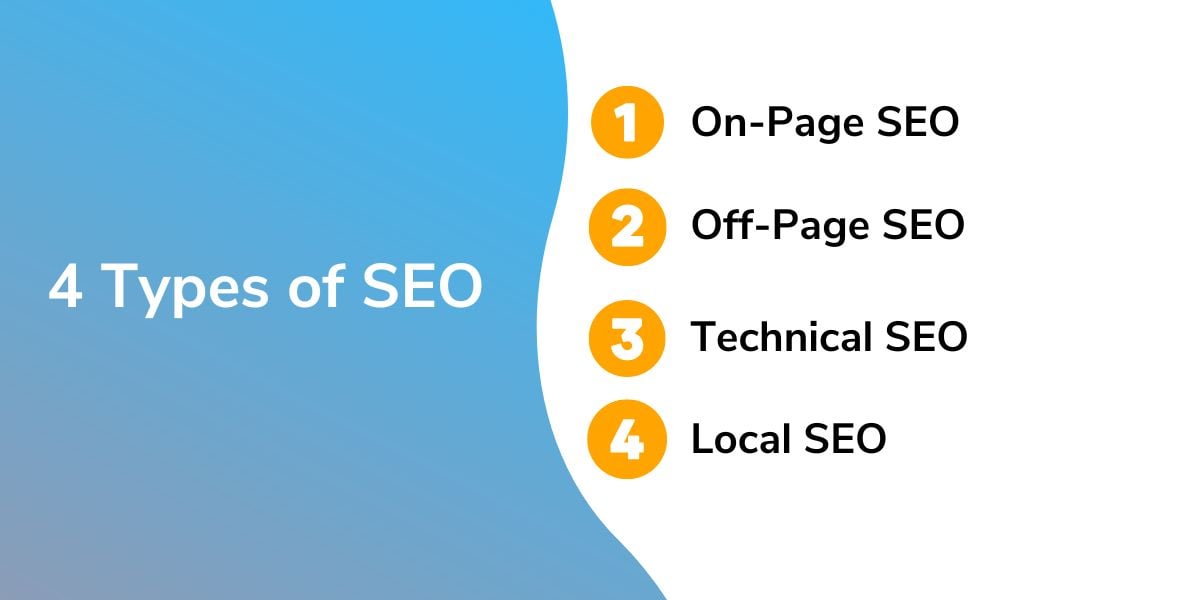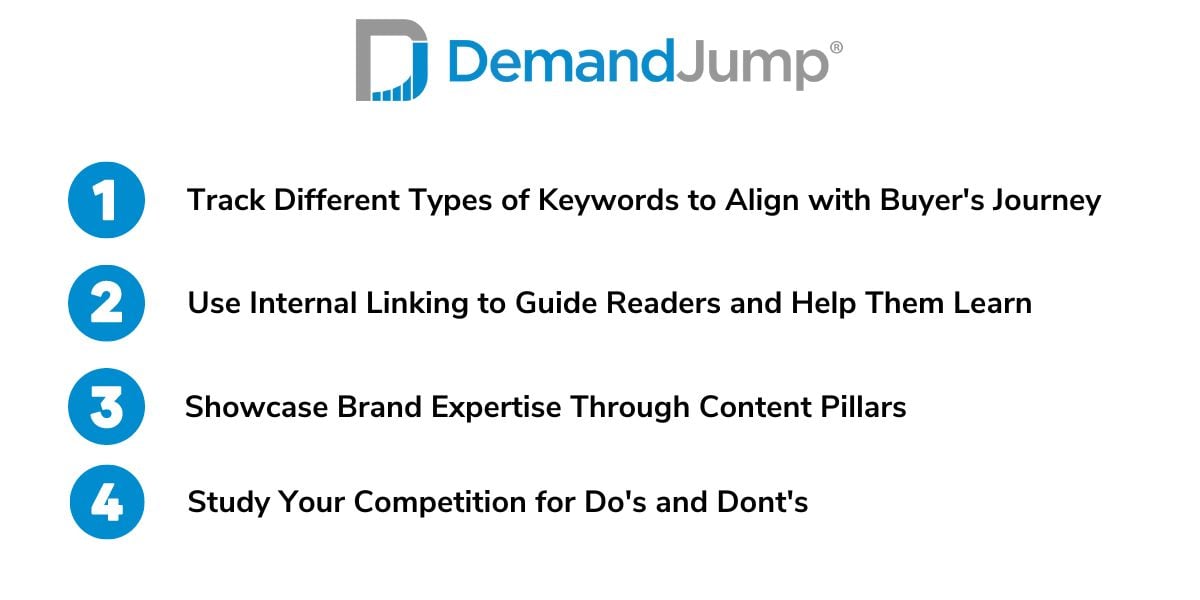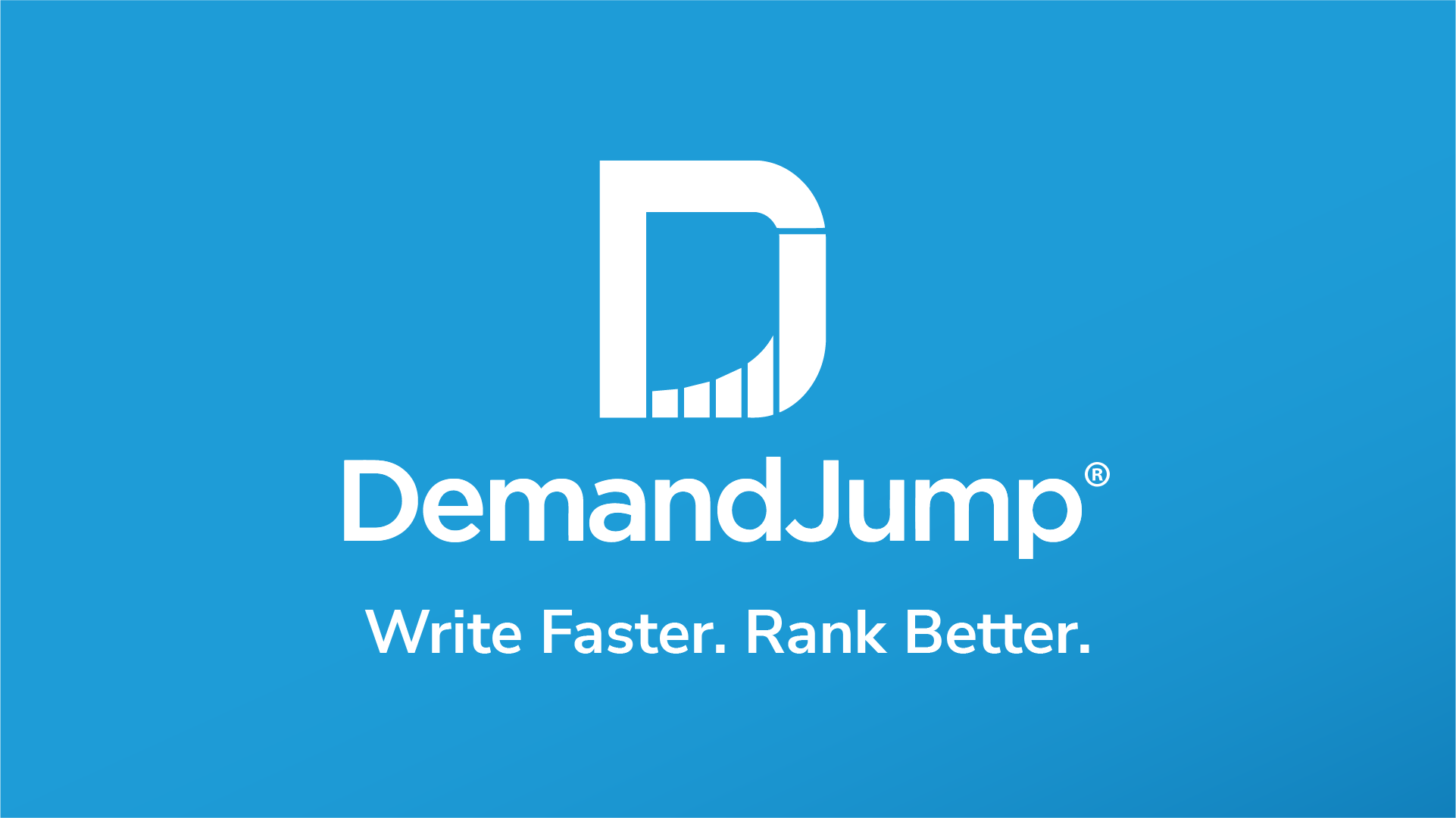SEO Strategy Guide
The term search engine optimization (SEO) was first used in 1997. Back then, search engines, and their results, were a lot different. Do you remember when Google looked like this? Can you imagine needing to click “About Google” today?

Back then, the internet was small. You could tell search engines how many results you wanted to see, and what you got back was more like the listings in the phone book than the metadata and featured snippets we see today.
Just like search engines have changed with time, so have the steps of SEO and the types of SEO tools marketers need to use. We’re sharing an updated SEO strategy guide to help you bring in the new trends while staying true to the tested best practices that will outlast updates to search algorithms.
Is SEO Still a Thing in 2023?
Yes, SEO is still a thing in 2023, just like billboards, radio ads, and television commercials. Don’t listen to the haters. Once they are proven effective, marketing tactics never die, they just change form. So yes, while SEO is still highly relevant, it also looks different than in the past, especially after Google’s 2022 helpful content updates. These updates were structured to help Google reward and rank content that users truly find helpful…not just the content which is doing SEO the best. What’s the difference? Don’t worry, just keep reading.
What Are the 4 Types of SEO?
The four main types of SEO are still on-page, off-page, technical, and local. However, the way you perform these types and how they function in an SEO strategy for 2023 may have changed from your current tactics.

1. On-Page SEO
On-page SEO is carried out directly on the web page or site itself. The most familiar example of on-page SEO may be researching a list of keywords to use in your content and headlines. But the 2022 changes to Google’s algorithm means the search engine now gives less priority to content that is only written for the purposes of ranking. This means the practice of “keyword stuffing,” which has been out of fashion for a while anyway, is now officially being penalized by search engines. Repeating the same keyword over and over, or jamming as many keywords as possible into your content, image alt text, and metadata is no longer going to work. What’s more, the penalty for these practices will impact your whole website, not just the one page where you are making the mistakes.
2. Off-Page SEO
Off-page SEO is the network of links and ads that direct users to your website from other sites. Guest blogging, press releases, and articles in industry publications can all drive referral traffic to your website. These links also send a signal to search engines that the content on the other side of the click is valuable–otherwise, why would people be linking to it? One additional facet of off-page SEO is that it takes you into the competitive landscape of your market and industry. You not only need to look for off-page SEO opportunities yourself, but also need to be aware of which competitors are winning backlinks, where the links are, and how they are getting the competitive edge.
3. Technical SEO
Technical SEO is the back-end settings and functionality that make your website easy to navigate. These include the site load time, mobile friendliness, and usability for those who are differently abled. If you have content that is duplicated across different pages on your website, this can create issues with technical SEO and therefore web ranking. If you have the same copy on two different pages of your website, when a user searches with a relevant query, the engine has to do extra work to determine which of your two pages to rank. Ultimately, the answer will be neither, especially since the repetition also sends a signal that the content is not very helpful.
4. Local SEO
Local SEO is the process that lets your website rank higher for users who are in the same region as your business geographically. If you’ve ever searched for something “near me,” then you understand why local SEO is relevant for certain kinds of businesses. Your “Google My Business” profile is the main driver of your local SEO authority. Factors like your hours of operation, services rendered, and customer reviews all play a role in whether you show up when someone searches for a business like yours in your area.
Search engine optimization is actually all four of these types done at once–you can’t pick and choose a focus on just one area. However, on-page SEO is the core of the strategy that helps all the other types succeed. Without a high-quality website with helpful content, your off-page SEO, usability, and local visibility don’t matter. You will be getting users’ attention, but not turning their interest into opportunity and ultimately new business.
Is SEO a Short-Term or Long-Term Process?
Search engine optimization is a long-term commitment, but winning with your SEO strategy doesn’t have to take a long time. A six month SEO plan leveraging Pillar Based Marketing can help your content climb to the top of search engine results pages (SERPs), but staying there permanently takes additional effort. The reason why SEO is a long-term process is because it takes regular content creation, as well as the ability to keep up with and adapt to trends. We know, that’s why you’re here. So enough about where we’ve been, let’s talk about where SEO is headed.
What Is the Best SEO Strategy for 2023?
The best SEO strategy in 2023 is one that puts quality content at the center of all four types we discussed above. Whether it’s your blog, landing pages, paid search ads, Google My Business profile, metadata, or some other element, the important thing is delivering helpful content to your audiences.
We won’t go so far as to say the best SEO strategy is no SEO strategy. You definitely need a strategy, but not an aggressive one. So then, what are the top SEO strategies? The best put your reader and their needs first, and preoccupation with what search algorithms are looking for second. If that sounds like a lot to figure out, here are some simple SEO tips for better rankings.

Best SEO Techniques and Tools
Here are some of the techniques and tools that may already be part of your SEO strategy in digital marketing, or that you might want to add to the mix.
SEO Techniques
- Track Different Types of SEO Keywords
You are already probably familiar with the idea of short-tail vs long-tail keywords, which is the distinction between keywords by length. Short-tail keywords are 2-3 word phrases, while long-tail keywords are, well, longer. But it’s also important to track your ranking for different keywords that relate to different stages of the customer journey. Some of your target phrases will be related to getting a prospect’s attention, while others are more connected to intent to purchase. One example is the difference between “what is a SaaS platform” and “how much does SaaS cost?” A user searching for the first one is still learning about what they need, but the second search reflects someone who is doing research to make a purchase. Understanding how you rank for each type of keyword will help you iterate and improve.
Internal linking between pages on your website is another valuable aspect of on-page SEO. It also helps your readers find their way to additional information and take the next best action (as in, contacting you or making a purchase.) Choosing one landing page or pillar page as a hub for all your supporting content to link to will give the target page lots of search authority. It might surprise you to learn that search engines can see the network of links on your website, and they also use it to determine which content is most helpful and relevant. A strong internal linking structure helps your audiences and supports your goals.
In a Pillar-Based Marketing (PBM) strategy, you will create one long pillar page (around 3,000 words) to serve as the hub. This piece should have a high-value short tail keyword as the title, and include other high-value keywords in all the section headers. Then, three support pillars between 1,500-2,000 words can take deeper dives into your topic, and each should link to the pillar page. Finally, 3 or 4 supporting blogs that answer specific questions your users are asking will each link to both the pillar page and the supporting pillar.
This tip goes back to the idea of creating helpful content your target audiences will find useful. Creating content pillars on your website is a great strategy to signal your topical authority to both readers and search engines. A PBM strategy like the one we described above gives you plenty of room to demonstrate all aspects of your brand’s topical authority, while also making the most of internal linking. As you create the different pieces of content in your pillar, do your best to avoid using the same keywords over and over, so each page has a unique opportunity to rank for different search terms.
Your SEO strategy does not exist in a vacuum. The content your competitors are publishing also impacts how your content performs. It’s important to research their best-performing pages for a few reasons. You might decide to create something similar, or you might notice flaws and gaps in their content that you want to address in your own. This research will also demonstrate different ways you can work in key messages, graphics, and videos. You might also learn about emerging competitors and be able to differentiate yourself early before they start claiming market share.
SEO Tools
The Ahrefs Backlink Checker lets you see the number of backlinks and other domains that are sending traffic to your website. The tool even reveals how much organic traffic the referring website gets and how much it might send your way. You can also use this tool to research which of your competitors’ pages are getting the most backlinks compared to your own.
Google Keyword Planner is a common starting point for SEO research for a lot of companies. Entering the topic you want to rank for will show related relevant keywords, as well as how the search trends for those keywords have changed over time. It takes a little bit of digging and effort to create the best keyword list, especially if you are looking for long-tail keywords and questions, but since this is a free tool, it might be worth the work for you.
Dashword lets you create content briefs based on keywords that are drawn directly from your competitors’ pages. This lets you reduce research time and clearly pick what topics to write about. If you want to create a content pillar to make the most of SEO, you might have to do some organization to track which pieces will link to each other, but after publication Dashword lets you monitor content performance and identify when existing content needs to be updated.
DemandJump is a platform specifically designed to help users win page one rankings. The algorithm draws in your own web performance data as well as that of your competition to show you exactly what content to create. This tool helps you not only align your content to user behavior, but also track how your rankings are improving and how leads are growing over time.
SEO Strategy Template
An SEO strategy needs to include on-page, off-page, and technical SEO, as well as local SEO if that is relevant for your business. Here’s a template to help you keep on-page SEO at the center while still including all necessary aspects of the strategy.
-
Create a Content Pillar (On-Page SEO)
-
Create a 3,000 word pillar page for the main topic you want to rank for
- Use 15-20 keywords throughout the piece of content
- Make sure each section headline contains or is a high-value keyword
- Write metadata between 120-150 characters that includes one or more short-tail keywords
-
Create three 2,000 word support pillars that talk more specifically about the main topic
- Use 15-20 keywords throughout, trying to choose different keywords from the pillar where possible
- Choose short tail keywords for your titles of the support pillars
- Link to the pillar in the introduction of your support pillars, and make sure the link is anchored in text that matches the title of the pillar exactly
- Follow the best practices of pillar writing we described above
-
Create twelve 750 word blogs, three each that relate to each longer piece of content
- Use 6-8 keywords throughout the piece of content
- When possible, choose a high-value question as your title for the blogs and give your readers the answer they need
- Link to both the pillar and support pillar in the introduction of your blogs
- Follow the other best practices describe above
-
Publish all your content at one time
- The pillar can be published as a blog, or become a landing page that is part of your site navigation
- Support pillars are also often published as blogs, though could be sub-pages
- If you don’t have a blog section on your website, your blogs could be published in your resources section or don’t have to live in your site navigation at all. The purpose is to attract organic traffic and visitors, so even if they aren’t in your site map, users will still find your content through search engines.
-
Promote and Share Content (Off-Page SEO)
-
Integrate content into your marketing collateral
- Share content on social media platforms that are relevant to your audience
- Drive traffic to your pillar pages with paid search ads
- Send out new content to your mailing list in a drip campaign to help audiences learn from the different pieces in your strategy
-
Seek opportunities to demonstrate your thought leadership
- Use resources like Help a Reporter Out to find chances to share quotes and perspectives that will get audience attention through other channels
- Research opportunities for guest blogging and publications for your company’s C-suite or leadership
- Don’t reuse previously published content if you secure guest blogging opportunities–write something new
-
Optimize Website Design and Performance (Technical SEO)
-
Update your user experience
- Address site loading time, especially for images
- Trim unnecessary parameters from your URLs
- Update your web design to align with ADA accessibility standards
-
Address website security
- Migrate your site to HTTPS protocol
-
Fix errors, broken links, and duplicate content
- Identify any pages on your site that don’t actually load (crawl errors)
- Correct any broken links, whether they lead to internal or external web pages
- Make sure only one version of your site is being indexed and upgrade any pages that aren’t performing well–starting the cycle again at the on-page SEO part of the template
This template might not sound perfect to you, but it’s a great place to start. Before you start making too many edits, let’s review some of the bad SEO practices that you want to avoid introducing to this framework.
6 Bad SEO Examples
- Keyword Stuffing: The practice of using a keyword phrase or related phrases as many times as possible, regardless of how uncomfortable or bizarre it makes the reading experience. Remember that search engines are now smart enough to recognize synonyms and parse user queries to search for the relevant words.
- Cloaking: The practice of showing one page to the search engine, then redirecting the user to another page when they click. This is a form of spamming that can get your website penalized or even taken off search results completely.
- Spinning Content: The practice of copy-pasting content from other sites. Sometimes this is just direct plagiarism, other times people try to use AI to rewrite the content or add a few words. In all cases, it is bad practice and can get you in legal trouble as well as compromise your SEO.
- Duplicate Content: The practice of reusing content across different web domains. In some cases you might need to repeat content like a set of instructions, but for the most part duplicate content should be avoided. It’s boring for the reader and makes you look lazy.
- Link Farms: The practice of creating multiple websites that can all backlink to one another as a means of generating authority. Search engines have been smart enough to recognize this behavior for a while and it is heavily penalized.
- Hidden Text and Links: The practice of hiding text or links by making the font really small or the same color as the background. People try this to work in more keywords and links, but it really just compromises the user experience and ability of your site to actually rank.
Ultimately, don’t try to trick people, and don’t write garbage content. Beyond these best practices, the rest is strategic decision-making you will perform based on your own goals, market, and company values.
Build Your SEO Strategy Plan with DemandJump
SEO strategy in digital marketing requires lots of tools and performance monitoring. One tool you absolutely need in your toolbox is DemandJump. Ours is a platform designed to deliver actionable insights into how your audiences are behaving online. Topic Summaries reveal all the high-value keywords and questions users are searching for related to your area of expertise. The same dashboard draws in competitor performance data to show you which pages are outranking you and provide recommendations on how to turn the tide.
For users with Premium and Pro accounts, we take the actionability one step further with pre-created Pillar strategies. These show you all the potential topics for support pillars and blogs that will drive your rankings. Pillars allow you to make strategic decisions that demonstrate your brand’s thought leadership and highlight your services and products in the best fashion. Once you’ve picked the topics, Content Briefs help you dig deeper into the search network and identify exactly which keywords to use in each piece.
If you’re looking for a tool to improve your on-page SEO and make your content planning and writing easier, look no further. Just click below to create your free account!















